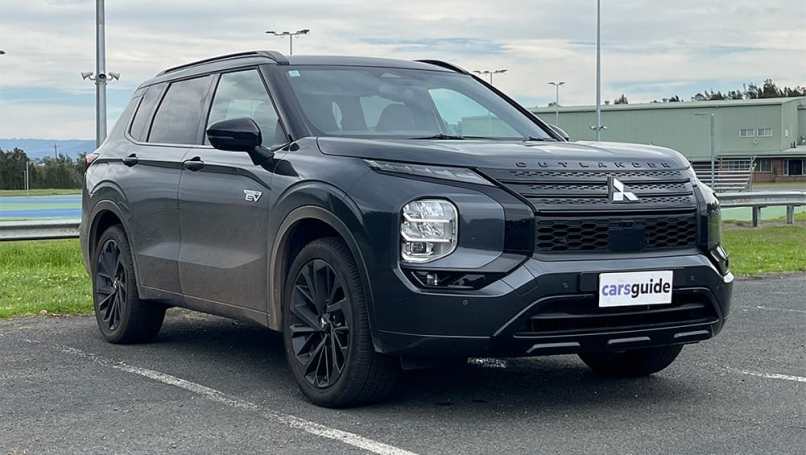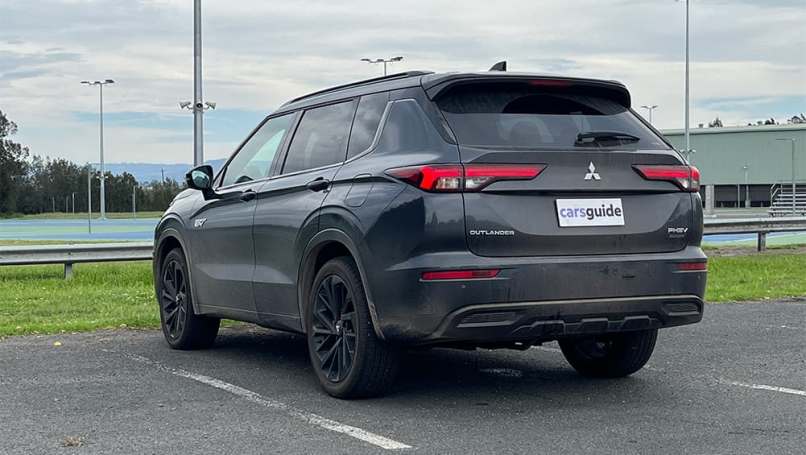
What in the HiLux hell is Toyota thinking? | Opinion
While Toyota in Australia is yet to spill much in the way of detail, credible...
Browse over 9,000 car reviews
Mitsubishi Australia's boss is calling for the federal government to do more to help carmakers meet tough new emissions regulations.
The New Vehicle Efficiency Standard (NVES) came into effect this year. The new legislation penalises car makers for every gram of CO2 a vehicle emits over a certain threshold. The penalty is applied to every offending vehicle sold and this threshold gets lower every year until 2030.
Carmakers can offset the sales of high-polluting vehicles with the sale of electric cars and plug-in hybrids (PHEV).
Australia is one of the last mature car markets to have an official emissions scheme, so the concept is nothing new to global carmakers.
The new NVES will hit several big name Japanese brands hard in the next few years, with many slow to roll out electric cars.
Head of Mitsubishi Australia Shaun Westcott wouldn't divulge if it would cop penalties in the next few years but said: "There are very few of the traditional car companies who are going to avoid some form of penalty".
He said the company will do as much as it can to mitigate penalties and to push its PHEVs as hard as it can. He said the company is all for the NVES but has called for the government to help it sell more of the low emissions vehicles.
“Government has put penalties in place for industry, so we’ve got plenty of sticks, and we will do the right thing, but the problem is we need a few carrots. We need incentives to drive consumer behaviour.”
Westcott pointed to new research from Deloitte that showed the biggest concern people had about EVs was range anxiety and lack of charging infrastructure.
So for people to overcome these hurdles they need some sort of incentive to compensate for the inconvenience, he said.

“We’ve got plenty of sticks, but not enough carrots,” he reiterated.
Mitsubishi is without any electric cars on sale in Australia. It sells two plug-in hybrids — the Outlander and Eclipse Cross — but the Eclipse Cross will be axed from the local line-up this year as it does not meet new Australian design Rules about auto emergency braking.
The brand will not immediately replace the model either, meaning it will be down to one plug-in hybrid model in its entire range.
The Outlander PHEV makes up about one quarter of sales for the large SUV, which might not be enough to offset sales of its other vehicles.
The brand also lacks conventional plugless hybrids in its current line-up, though that might change with the arrival of the updated ASX compact SUV later this year.
Plug-in hybrids have substantially bigger batteries than normal hybrids, and much more powerful motors, which allow them to be driven a decent distance in electric-only mode. The current Mitsubishi Outlander PHEV can travel up to 80km and the upgraded version due soon is likely to lift this to about 100km.
Westcott said Mitsubishi’s research had shown most of its PHEV customers drive mostly in electric mode all the time.

This shows they are a great transition vehicle to electric cars and they can make a meaningful reduction to tailpipe emissions today.
Mitsubishi Australia's Government Relations Manager Yarik Turianskyi said the company had made several proposals to the government about how they could incentivise PHEV sales.
"We're also trying to propose some alternative mechanisms. It could be an upfront rebate, it could be the removal of GST. Because we believe that just as the sales are going up, you don't want to shock the market, remove these incentives, and then all of a sudden the market will go down. Because PHEV sales will be able to produce emissions reduction right here and right now ... so let's keep supporting it," he said.
Mitsubishi also wants the government to allow electric vehicles sold in regions such as Europe and Japan to be allowed in without having to meet some of our unique ADR requirments.
Mitsubishi has the potential to leverage electric vehicle technology from its current alliance partners Nissan and Renault.
Nissan has confirmed Mitsubishi’s plug-in hybrid technology will feature in the next-generation Navara ute, so a quid pro quo could deliver a Mitsubishi electric car based on the Ariya mid-size electric SUV on coming compact Leaf SUV.
That Navara news also suggests a plug-in hybrid version of the Triton isn't far away, but this is still unconfirmed by Mitsubishi.
For now, Mitsubishi is mum on any electric cars coming Down Under but its global Momentum 2030 plan puts electrification at its core, with a stream of new models due over the course of the decade to help alleviate these pain points.
Comments